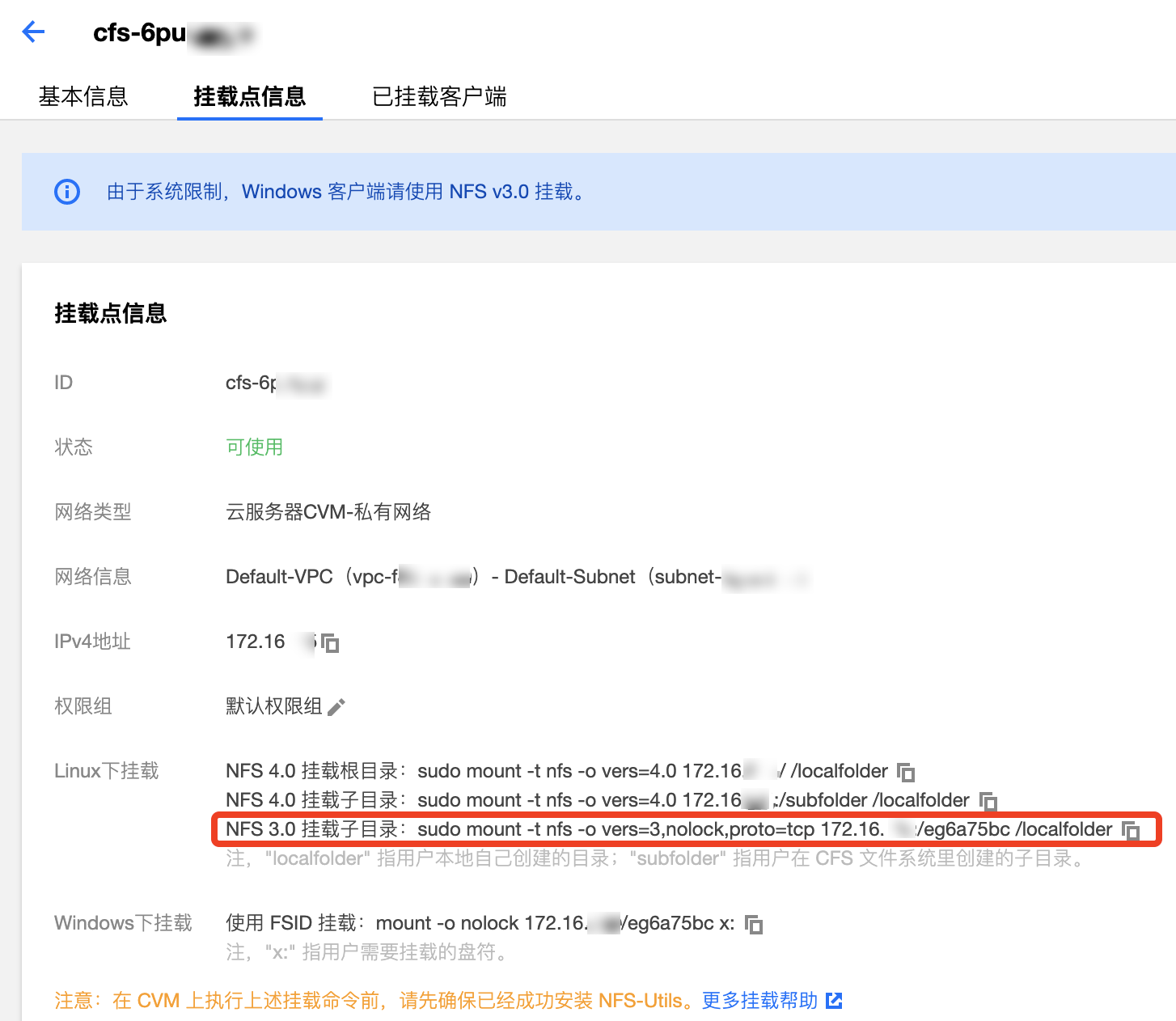nfs 小文件及高并发场景下客户端使用卡顿
背景
文件存储(Cloud File Storage,CFS)支持 NFS v3.0 及 NFS v4.0 协议, 其中 NFS v3.0 是 NFS 协议较早期版本,兼容 Windows 客户端;NFS v4.0 协议为稍后期版本,支持文件锁等功能。
客户端现象
在大量小文件或者大小文件混合场景下,用户在容器服务(Tencent Kubernetes Engine,TKE)或者云服务器(Cloud Virtual Machine,CVM)等客户端使用 NFS v4.0 协议挂载 CFS,可能在应用运行一段时候后出现:客户端负载居高不下,无限累加,业务读取数据慢或无响应,但是业务进程的 CPU 使用率并不是很高的情况。
问题原因
上述问题出现的主要原因是 NFS v4.0 协议的限制, 客户端使用 NFS v4.0 同时大批量读写文件时由于协议的 OPEN/CLOSE 操作为串行化,因此在客户端大量操作请求并发情况下,协议处理会形成阻塞。具体协议描述如下:
- There is a limitation to the Linux NFS4.0 client implementation that an "open_owner" is mapped to a userid. This results in a bottleneck if one user opens and closes a lot of files in a short period of time. Each OPEN / CLOSE operation has to wait for a sequence id, which essentially serializes each OPEN / CLOSE request. If an NFS server's response time for OPEN / CLOSE requests increases due to some secondary load or complication, this NFS4 client limitation can become pronounced, and in some cases, cause an unresponsive machine.
- The NFS4.1 protocol addresses the limitation of serialization of OPENs per open_owner. For more information, see RFC 5661 Section 9.10
使用优化
如果业务应用存在大量小文件的场景,或者并发操作文件数量巨大,推荐客户端使用 NFS v3.0 协议挂载。以下为规避大量小文件及大并发请求下客户端高负载的问题的方法。
云服务器等客户端挂载方法
进入 文件存储 控制台,打开待挂载的文件系统详情中的挂载点信息,找到如下图的 NFS v3.0 挂载命令。使用该挂载命令挂载文件系统即可。

容器客户端挂载方法
容器可以通过 pv/pvc 的方式使用 NFS v3.0 协议进行挂载,参考配置如下。
apiVersion: v1 kind: PersistentVolume metadata: name: cfs-test-pv spec: accessModes: - ReadWriteMany capacity: storage: 9000Gi mountOptions: - vers=3 - nolock - proto=tcp - noatime - nodiratime - noexec - hard - rsize=524288 - wsize=524288 nfs: path: /[cfs-id]/[mount-path]/ server: [cfs-server-ip] persistentVolumeReclaimPolicy: Retain storageClassName: cfs-test-pv volumeMode: Filesystem --- apiVersion: v1 kind: PersistentVolumeClaim metadata: name: cfs-test-pvc namespace: default spec: accessModes: - ReadWriteMany resources: requests: storage: 9000Gi storageClassName: cfs-test-pv volumeMode: Filesystem volumeName: cfs-test-pv
引用:
https://cloud.tencent.com/document/product/582/46359


